It’s five weeks since Rukmini Patel and I launched the Design for Diversity Pledge and accompanying sticker and we thought it might be time to update you on what has happened since. The first point to note is that we have had nearly 150 signs up from large brands to sole traders all of them wanting to show they wish to be more inclusive and diverse in their work.
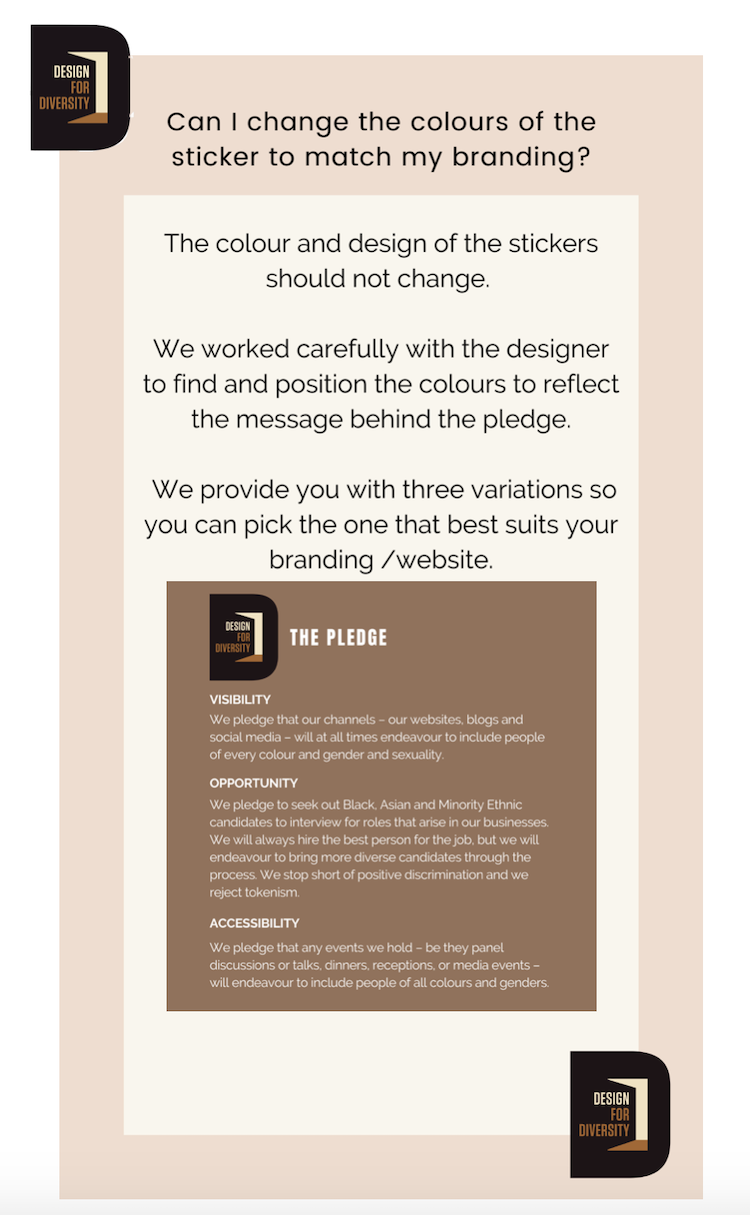
This ranges from the stylist sourcing props from black-owned businesses for her Christmas magazine shoots to big brands like Sanderson, Zoffany and Morris & Co alongside Mylands, Farrow & Ball (their link is in progress as they are working on global participation) and, of course, one of our first signatories Heals.
Each one of those sign ups has involved a conversation about what it entails and we have found a real willingness to learn and a desire for change. I am proud of our industry for moving forward on this.
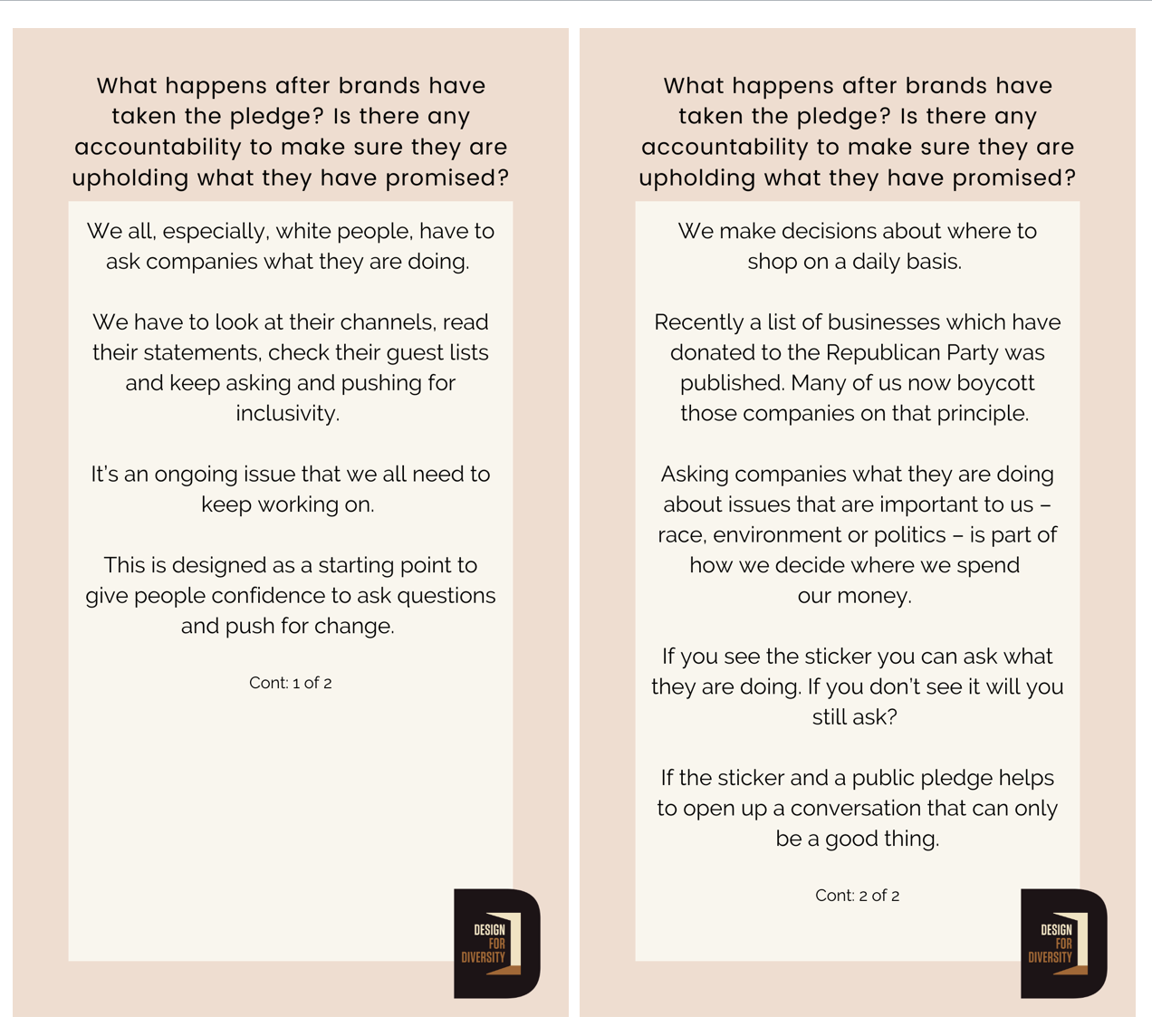
Some companies have, as we hardly dared hope when we launched the scheme, taken this simple idea much further. Rockett St George, another of the first to sign up, put it on their front page with a link to further resources such as books to read and places to donate. Dowsing & Reynolds have created a diversity page with links to local organisations (they are based in Leeds).
Studio Carew, a small family business run by a father and daughter, said: “For any young people of colour who are starting out and are aspiring furniture designers, I would like to invite you to use us as a sounding board as what we can offer is experience. I would welcome the opportunity to discuss your designs and offer any advice and I think this has been useful to people starting out in the past. So please do email us at [email protected] if you’re looking for a friendly company to bounce ideas off.”
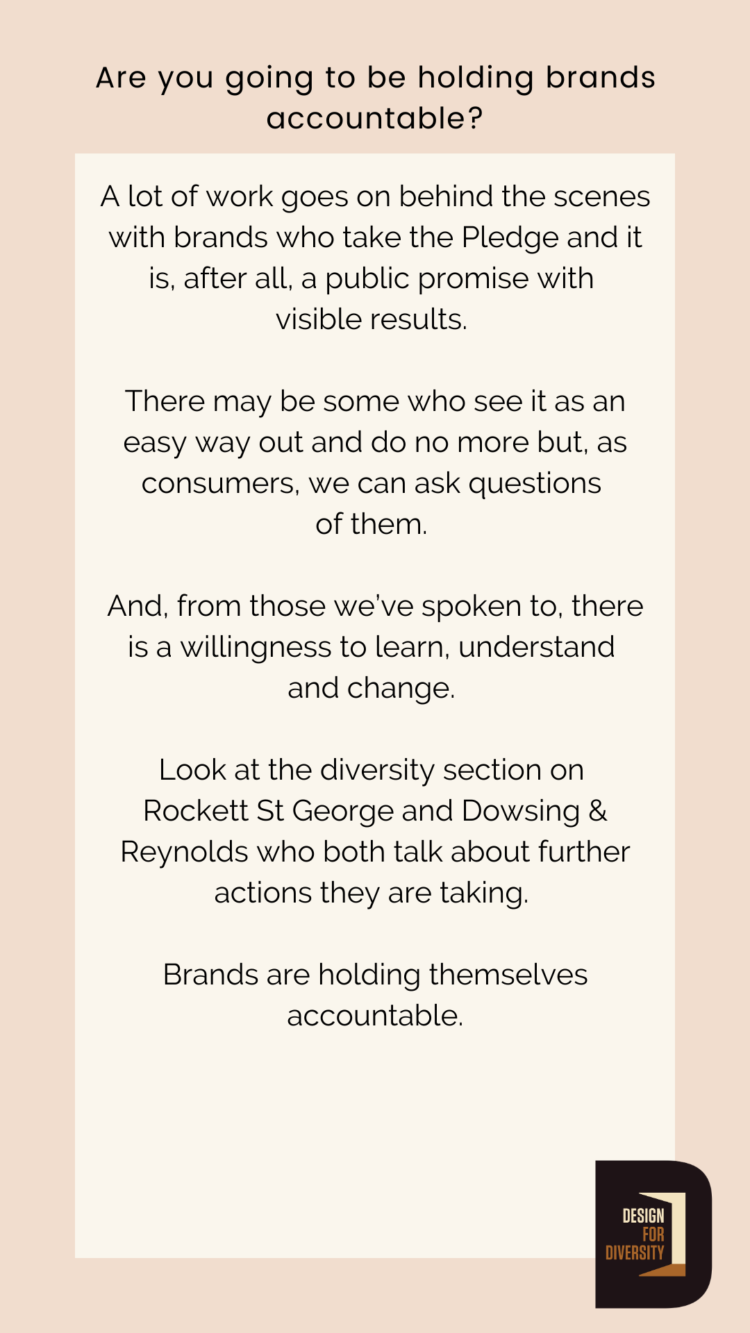
And Blackpop, a wallpaper and textile company, near Derby, have set up a bursary for a textile student at their local university. This year they have funded a third year black student whose dissertation is on the lack diversity and Black people in design.
They plan to support her through the year launching a product after she graduates with all the marketing support and help necessary. They hope this will become a template for other companies too and are happy to offer advice to anyone else who is thinking of following suit.
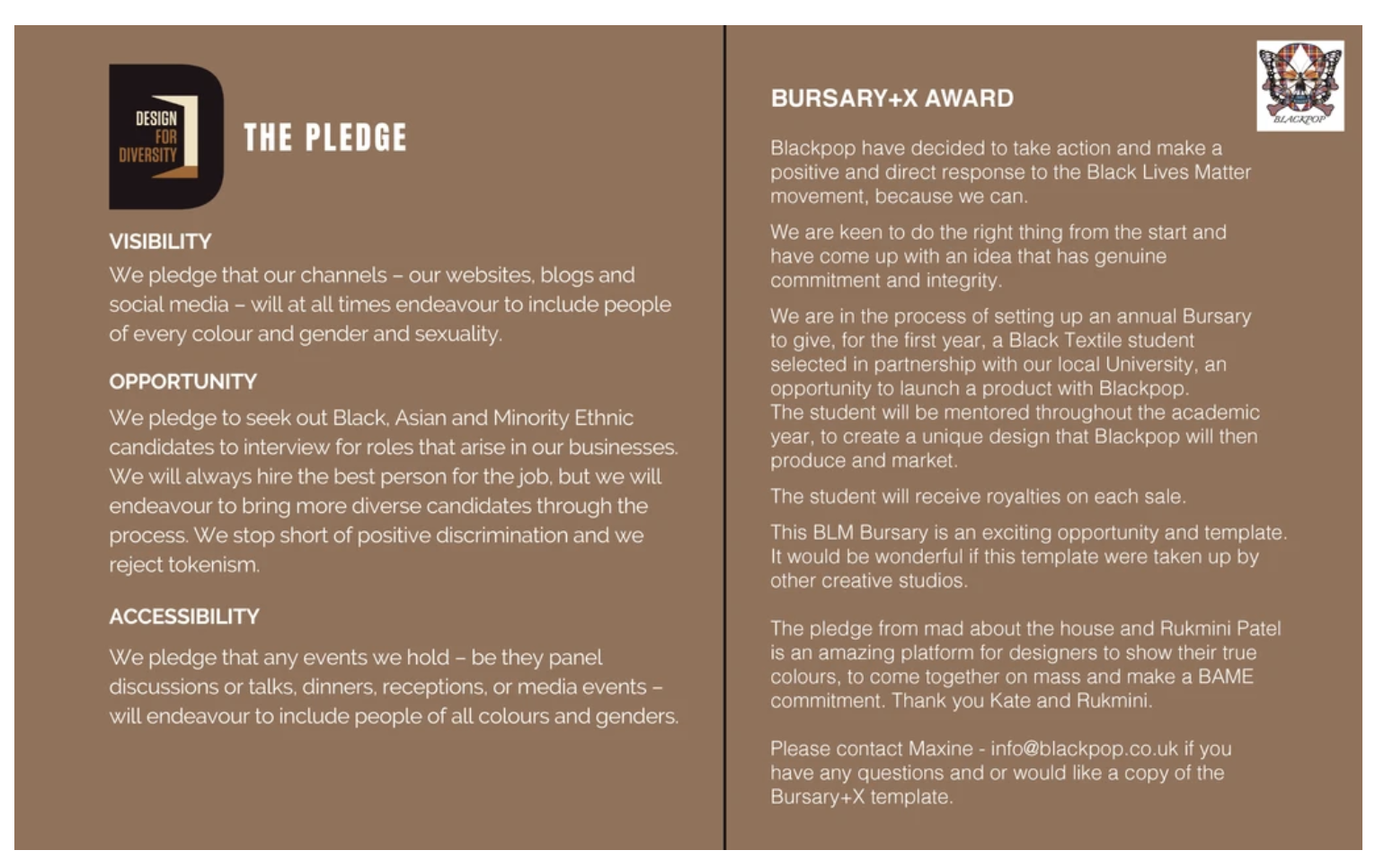
Charlotte Raffo, who runs The Monkey Puzzle Tree, another textile company, based near Leeds, has also written about how hard she has found it to find diverse designers. She wrote: “For a while I’ve been concerned about the lack of diversity in the artists we collaborate with, but have been struggling to make sure our artist call-outs reach everyone from all local communities… the publicity around this issue and signing up to this pledge has helped us receive many more applications from artists of all backgrounds over the last few weeks. So tonight I’m meeting our new artist for the first time.”
That artist is Josephine McYebuah @jmcyebuah and you can follow her progress either on her own instagram account or The Monkey Puzzle Tree.
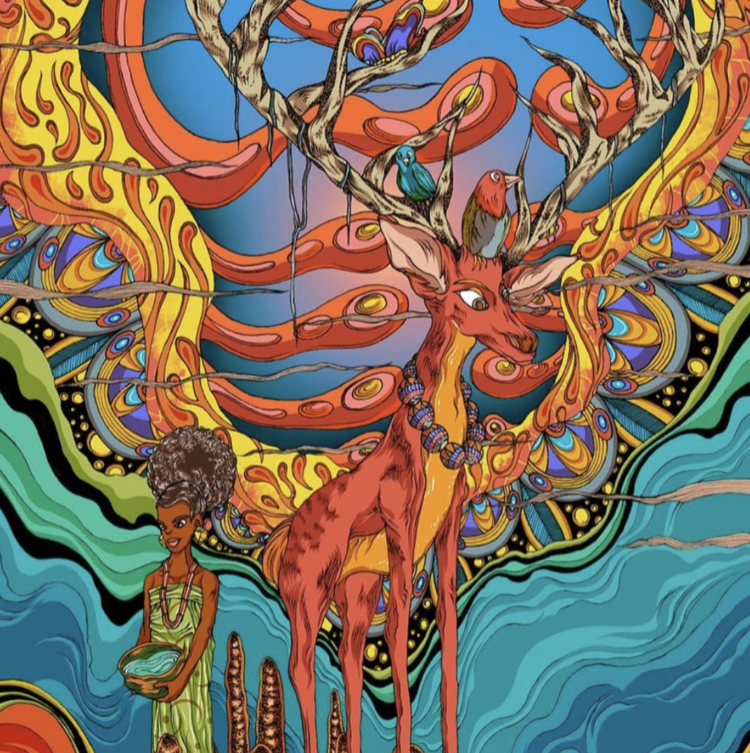
Other initiatives include mentoring. Lisa, of Born and Bred Studio, added the pledge to her site and included the following statement: “Born & Bred Studio would love to discover a more diverse selection of makers and products to introduce to our clients. and whilst I largely work alone and don’t employ a team, I’m very open to mentoring more young people interested in entering the fashion/interiors world.
“What does this look like? One person a month. One hour session a week (x4) on zoom or in person (candidate needs to travel to NW London – NW6, NW10 or NW2).”
Now, we are aware that this idea will not be for everyone. We have also heard from some who worry that brands will simply award themselves the sticker and carry on as before (see the Q&A images for our response to this) but It’s an encouraging start. And we do recognise it as a start and not as a solution. Each one of those sign-ups has involved a conversation and we have found a real willingness to learn and a desire for change.
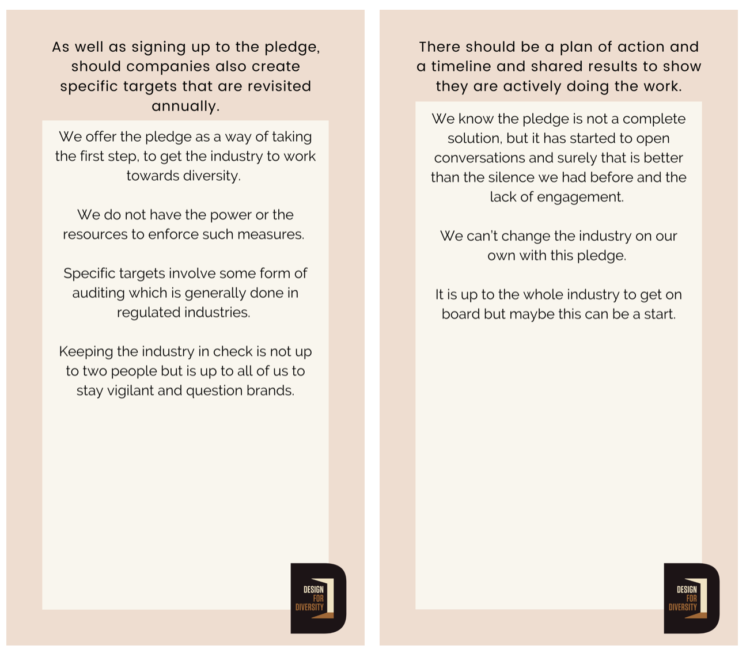
We never launched this as a solution, simply as a first step and as a way for companies who want to do better to show they are trying. The simplicity of the idea means you can take it or leave it. And, since we don’t have the power to audit anyone, it’s about being publicly accountable. If you put this sticker in a prominent place on your site it’s easy for consumers to see if your channels are diverse, if your events are inclusive. Changing staff numbers takes time (particularly in the teeth of a post-pandemic recession) and we were clear to make the point that we aren’t expecting anyone to fulfil, or enforce, quotas. There is much debate around that issue (Michelle Ogundehin and Harriet Harman disagreed on the newly formed Times Radio recently – the former is against the latter pro) and we don’t pretend to have the answers to that.
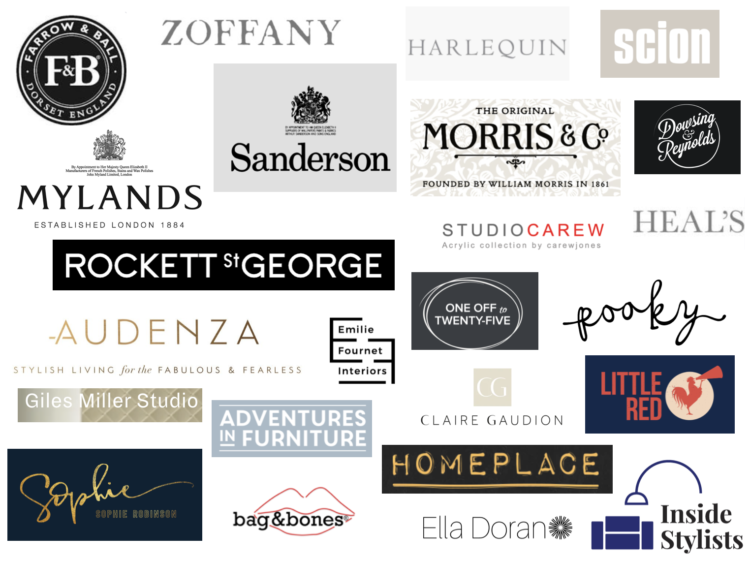
But we hope that this will keep the conversation going, make it easier for individuals to approach brands and for brands to reach out to individuals. When it comes to employment I am reminded again and again of two conversations I had on the same morning a couple of weeks ago.
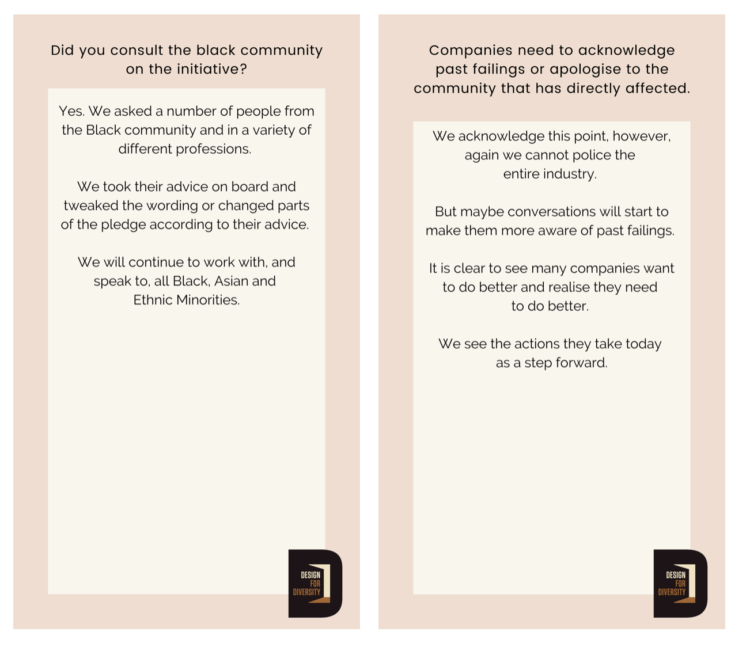
The first with a black woman who told me that when seeking work in the 1990s she was always encouraged by job advertisements that stated: “We particularly welcome applicants from Black and Minority Ethnic candidates” as she felt that (working in a predominately white industry) a statement like that meant her application would be taken seriously.
The second, directly afterwards, with a white woman who runs her own business who said: “I’ve never put that on a job advert because surely it’s bloody obvious.”
And it turns out that it wasn’t obvious and that Black, Asian and Ethnic Minority candidates haven’t felt welcomed and may well not have applied for jobs. So if The Pledge makes any of that a tiny bit easier then it will have done its job.
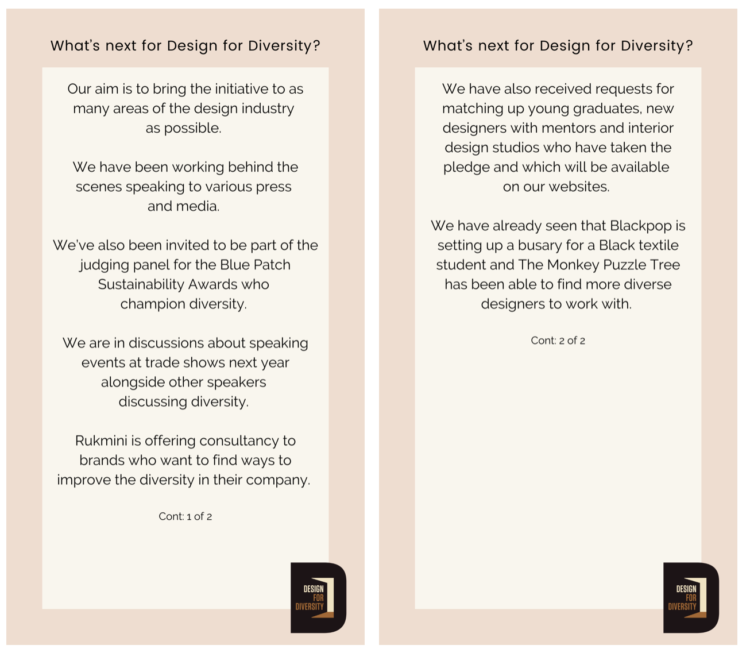
Before I go, there are other initiatives that are emerging, some of which go much further and are more detailed than ours. You can read about them here, in this article in Vogue and I will be returning to Alex Dauley’s United in Design next week as I have interviewed her for the podcast. The Times newspaper also featured us on launch day and there are other articles in the pipeline.
Laura Jane Clarke, who has also featured on these pages before, has set up SirenSister, a diverse network female-led network of architects, interior designers, stylists, horticulturalists, photographers, makers and consultants for the TV and film industry.
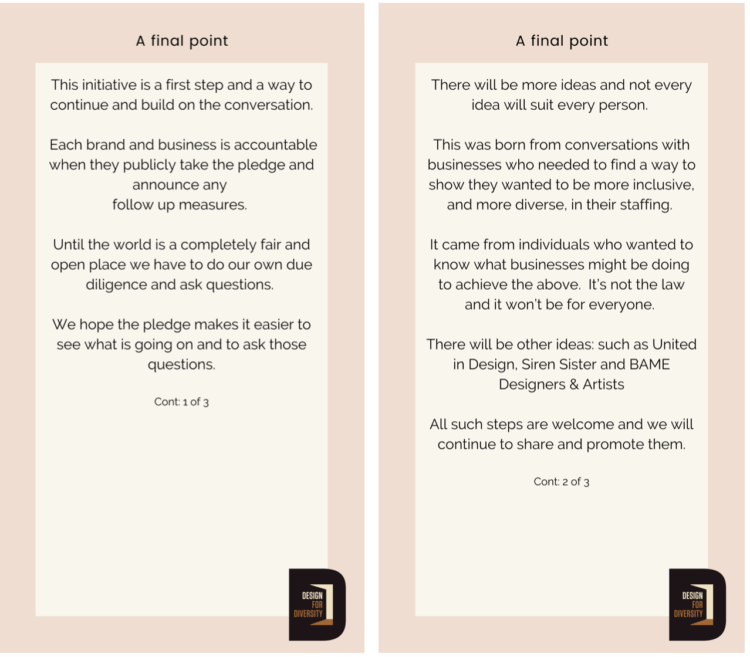
Since the launch, Rukmini and I have been asked to be on the judging panel for the Blue Patch Sustainability Awards and we are in talks with the director of the London Design Festival about working together in 2021.
We are also delighted that three magazines from the former TI Media, now Future PLC, are on board: Ideal Home, Style at Home and Country Homes & Interiors have signed up.
We have created permanent pages and are working adding of all the sign ups but you can see Rukmini’s work in progress here and mine is here.
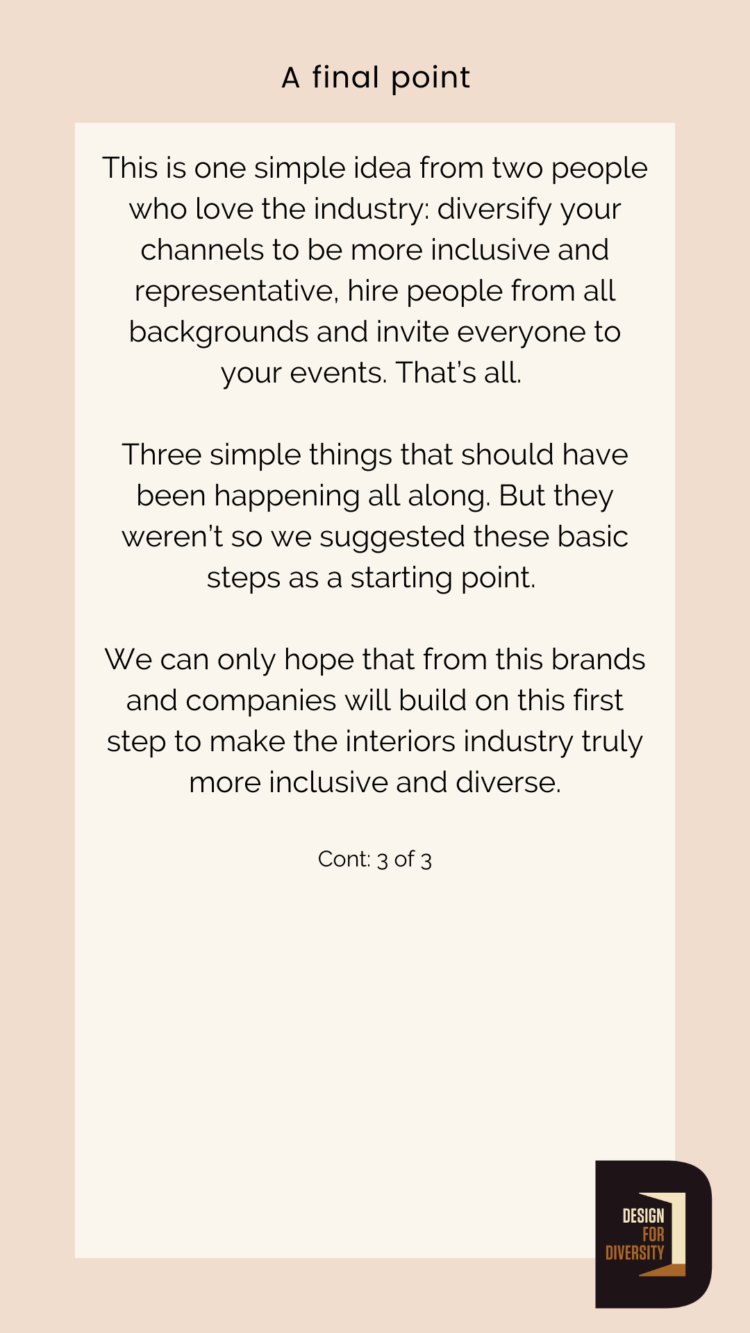






Thank you for your hard work and resilience in these troubled times.
Brilliant! Thank you so much for the update and your ongoing commitment Kate
Bravo Kate and Rukmini fantastic prompt and proactive well done
Fantastic work Kate! Keep it up